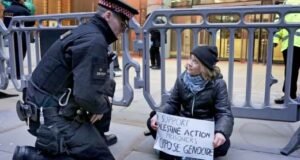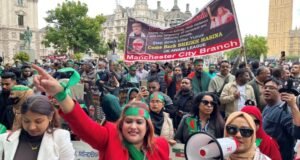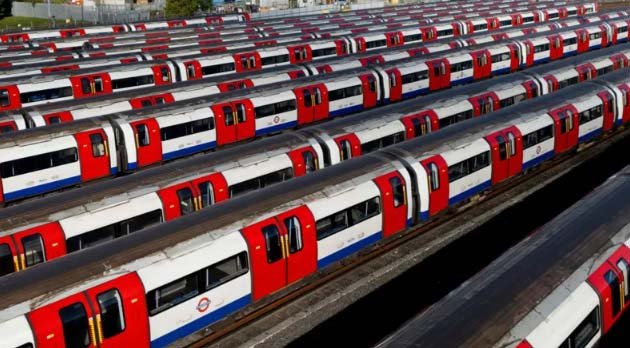
There was little-to-no Tube service for five days in London
Five days of Tube strikes that badly disrupted London have drawn to a close.
Business groups say the walkout will have cost the capital £230m.
The dispute centred on demands for a reduction in the working week to 32 hours by the RMT union.
The industrial action ended at 08:00 BST although Transport for London (TfL) warned of delays as services get back to normal.
Looking forward, what happens next?
Will there be more strikes?
This is the big question. The sticking point in this dispute is the demand for a 32-hour week – reduced from 35 hours – by the RMT. Language from the union softened and it says it wants “steps towards” a 32-hour week.
But for TfL this previously was a red line. It says even a 30-minute reduction in the working week would cost £30m a year. A reduction to 32 hours, according to TfL, would cost over £200m which it would then not be able to invest in the system.
The Mayor of London Sir Sadiq Khan did not intervene to avert the strike, although he did in 2024 with £30m of GLA funding. Critics say that move undermined talks in 2025.
On Thursday, the general secretary of the RMT Eddie Dempsey told the BBC: “We are pleased to see finally that Sadiq Khan has instructed TfL to meet us…so I’m now waiting for a formal invitation and once that is received we will go straight back to talks and a resolution so we can get London moving again.”
The mayor told the London Assembly on Thursday he expected talks to resume between the RMT and TfL soon.
TfL has invited the RMT to talks on Wednesday. It says it was not instructed to do so by the mayor. To get a resolution it would probably take compromise on both sides, which has been in short supply so far.
For another strike to happen, union members would have to agree via an organised vote – known as a ballot.
If workers agree to strike, details must be given to TfL at least 14 days before it begins (unless the union and employer agree to seven days).
Bus strikes that had been due to take place this weekend in north-west and south-west London have been called off.
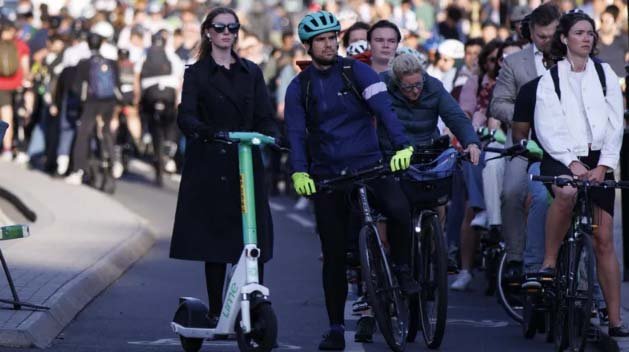
Many Londoners switched to other transport modes
How did Londoners cope?
Across most days there was a drop of about a quarter (24%) in the number of commuters using contactless and Oyster cards in London. It’s difficult to say where those commuters went, apart from on to non-TfL services. It would make sense that many worked from home or switched to walking and cycling.
Of those who did travel, many switched to other modes. Bus use went up 5% compared to the same day last year.
London Overground went up 20% compared to the equivalent day last year.
And TfL Cycle Hire, by 15:00 on Wednesday, had 19,608 hires. Last Wednesday, at the same point, it had 10,158 hires, reflecting a 93% increase.
One thing we have learnt from the pandemic is when fewer people travel on the network, it eases the disruption for those who have to travel.
London Underground did manage to run some Tube services but not many.
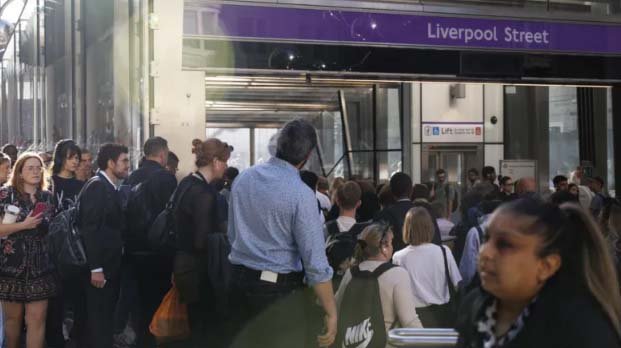
Elizabeth line usage went up by 26%
New routes – and new commutes
Londoners are resilient getting around. The Elizabeth line has not only redrawn London, it has changed the way people get around during Tube strikes.
It was very busy at times but it made travelling east-west a lot easier. Early on there were issues with Elizabeth line stations not opening in central London due to a lack of staff. TfL stats show a 26% increase in commuter traffic on the Elizabeth line.
The Thameslink service that runs north-south was also very busy.
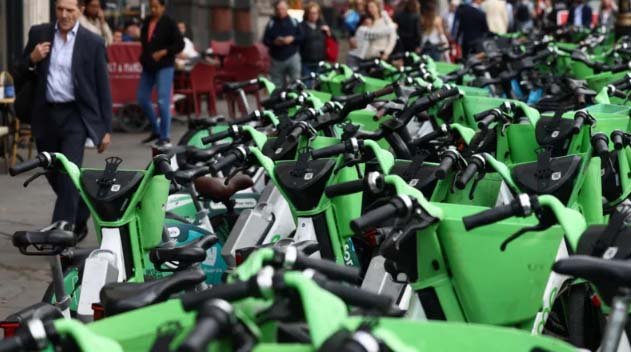
E-bike operators reported a surge in use
A new solution: E-bikes
A big theme was the emergence of e-bikes. Lime bikes says it had a 74% increase in trips, a 40% increase in trip duration and a 35% increase in distance.
So it seems commuters were using e-bikes to travel much longer distances. Lime is part owned by Uber and Google and it is an interesting aside that a Californian tech company promoting individual travel has benefited from strikes on a publicly owned mass transit system.
On Monday, Forest bikes saw a 300% increase in rides from 27,000 to 60,000. Over the week it says it will see a 500% jump in usage as it accumulates new riders.
So was this the coming of age of the e-bike in London?
It did mean huge numbers of e-bikes ended up blocking streets in central London. Lime introduced “strike parking zones” but the charity Guide Dogs said the clumps of hire e-bikes were a big concern.
Calling for more regulation, it said: “The rental firms admit use has spiked, yet their measures – like geo-fenced parking and retrieval teams – are not up to the job.
“Without stronger rules and enforcement, this free-for-all will continue to put blind and partially sighted people in danger.
“The government has recently published plans to license and control these rental schemes. The situation on the streets of many cities shows how desperately these powers are needed.
“We also urge riders to be considerate where they park to help keep our pavements clear and accessible for everyone.”
Impact on business
Hospitality groups say the strikes dealt a sharp blow to smaller operators.
KERB, which runs street-food markets and the Seven Dials Market in Covent Garden, reported a 60% drop in footfall at Seven Dials compared with the same week last year. It said this equated to a loss of more than 24,000 potential customers.
Simon Mitchell, the firm’s chief executive, said it had been forced to close four of its midweek lunch markets, costing about 30 traders an estimated £40,000 in revenue.
“The strikes have been a hammer blow to London’s street food community – coming after a typically quieter summer trading period,” he said.
“It’s already harder than ever to survive as a small food business.”
UKHospitality, a trade body representing the sector, said the strike could have cost up to £600m.
Kate Nicholls, its chief executive, said: “Our pubs, bars, coffee shops, hotels and restaurants, to name a few, continue to suffer as collateral damage, with total lost sales since the start of the dispute last year now expected to reach more than £3bn.”
 Weekly Bangla Mirror | Bangla Mirror, Bangladeshi news in UK, bangla mirror news
Weekly Bangla Mirror | Bangla Mirror, Bangladeshi news in UK, bangla mirror news




